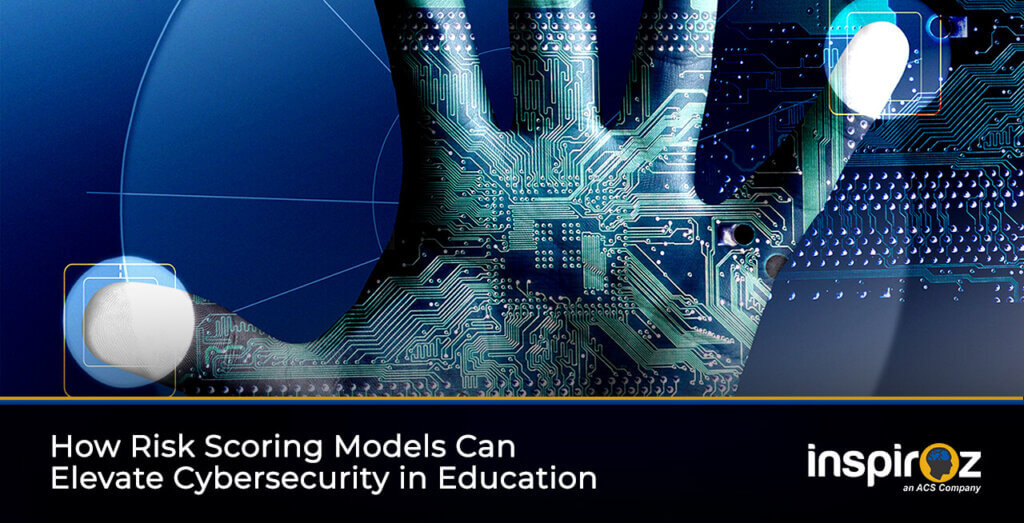How Risk Scoring Models Can Elevate Cybersecurity in Education
Sensitive data like student records, research data, and financial information at stake, the education sector is under increasing pressure to safeguard its digital corridors.
This is where risk scoring models come into play, serving as critical tools for cybersecurity teams to identify, prioritize, and mitigate cyber threats effectively.
The imperative to establish strong cybersecurity measures in education is not just a matter of protecting data, but of safeguarding the reputation and integrity of these venerable institutions.
As such, the adoption of risk scoring models represents a shift towards a more sophisticated and strategic approach to cybersecurity in the educational arena.
What is Risk Scoring Models?
Cyber threat risk scoring models are systems or methodologies used to assess and quantify the risk posed by cyber threats to an organization’s information and technology assets.
These models help organizations prioritize their security efforts based on the potential impact and likelihood of different threats.
The Imperative of Cybersecurity in Education
Data Breaches in Educational Sectors: A Look at the Numbers
The education sector has witnessed a staggering increase in cyber-attacks in recent years. According to a report by the K-12 Cybersecurity Resource Center, the number of publicly disclosed school cyber incidents in the United States alone increased by 18% in the year 2023.
This statistic illustrates not just the prevalence but also the escalation of cyber risks in education.
The Unique Vulnerabilities of Educational Institutions
Educational institutions are uniquely vulnerable due to their open nature, diverse user groups, and oftentimes underfunded IT departments.
Schools and universities are designed to promote information sharing, which can inadvertently increase their attack surface.
Furthermore, the mix of students, faculty, and staff increases the challenge of maintaining consistent cybersecurity practices.
The Cost of Cyber Threats in Education
The cost of these cyber threats extends beyond immediate financial implications. The damage to an institution’s reputation can have long-lasting effects on enrollment and funding.
More disturbingly, a breach could lead to the loss of sensitive research data or expose student and staff personal information, leading to identity theft and legal repercussions.
Fundamentals of Risk Scoring Models
Definition of Risk Scoring Models in Cybersecurity
Risk scoring models are systematic and analytical tools that quantify the potential impact of cyber threats.
By assigning a numerical value to various factors such as threat likelihood and potential impact, these models help prioritize responses to the most critical risks.
The Role of Risk Scoring in Threat Prioritization
Effective risk scoring enables institutions to focus their limited cybersecurity resources on the most severe threats. It provides a rational basis for cybersecurity decision-making, moving away from reactive measures to proactive threat management.
Components of a Risk Scoring Model
A comprehensive risk scoring model typically includes:
- Asset Value: Assessing the importance of different digital assets to the institution.
- Vulnerability Severity: Evaluating the weakness of systems that attackers could potentially exploit.
- Threat Capability: Estimating the level of threat based on the capabilities of potential attackers.
- Threat Event Frequency: Considering how often a particular threat is likely to occur.
Application of Risk Scoring Models in Education
Case Studies: How Schools Have Implemented Risk Scoring
Several educational institutions have successfully implemented risk scoring models to prioritize cybersecurity threats.
For instance, a Midwestern university utilized a risk scoring system to reallocate funds towards the protection of research data, resulting in a significant decrease in attempted breaches over the following academic year.
Customizing Risk Models for Educational Institutions
For risk models to be effective, they must be tailored to the unique environment of the educational sector.
This involves calibrating the model to reflect the institution’s specific data types, operational practices, and compliance requirements.
Integrating Risk Scoring with Educational IT Systems
Seamless integration of risk scoring models with existing IT systems ensures that threat intelligence is continuously updated and that responses to threats can be quickly deployed.
Automation plays a key role in maintaining this integration, providing real-time risk assessments that guide security protocols.
The sections above delve deeper into the importance of cybersecurity in education, laying out the framework of risk scoring models, and beginning to explore their application within the sector.
The next part of the article would continue from here, delving into the methodology of risk scoring in education, discussing data and trends, building an educational risk scoring model, and analyzing challenges and considerations.
Methodology of Risk Scoring in Education
Identifying the Assets: What Schools Need to Protect
At the core of risk scoring is the identification and valuation of assets. Educational institutions must first categorize their assets, ranging from student personal information and academic records to intellectual property and infrastructure data.
Each asset class is assigned a value based on its importance to the institution’s mission and operations.
Assessing Vulnerabilities: The Education-Specific Cyber Threat Landscape
Vulnerability assessment in educational settings involves scrutinizing the institution’s defense against known education-sector-specific cyber threats.
These may include phishing attempts aimed at students, ransomware targeting administrative records, or DDoS attacks against campus networks.
Evaluating Threat Impacts: The Potential Damage to Educational Entities
Understanding the potential impact of each threat allows institutions to prioritize which vulnerabilities require immediate attention.
This evaluation considers the extent of operational disruption, the cost of recovery, and the potential harm to the institution’s stakeholders.
Data and Trends in Risk Scoring
Statistical Evidence of the Effectiveness of Risk Scoring Models
Recent studies underscore the effectiveness of risk scoring models. A survey by the Educause Center for Analysis and Research found that institutions utilizing risk scoring were 35% less likely to experience a major cyber incident than those without such a system.
Trends in Cyber Threats in Education and Their Risk Scores
Cyber threats evolve rapidly, and the educational sector has seen a rise in sophisticated spear-phishing and ransomware attacks.
Risk scoring models help in identifying these trends, allowing institutions to adjust their defenses dynamically.
Research Insights on Risk Prioritization
Ongoing research highlights the need for risk scoring models that accommodate the changing cyber threat landscape.
Adaptation and learning are critical, with AI and machine learning increasingly being applied to predict and prioritize risks.
Building an Educational Risk Scoring Model
Step-by-Step Guide to Developing a Risk Scoring System
Creating a risk scoring model requires a systematic approach:
- Asset Inventory: List and categorize all digital assets.
- Threat Modeling: Identify potential threats specific to the education sector.
- Vulnerability Analysis: Conduct assessments to find system weaknesses.
- Impact Assessment: Determine the potential damage from each threat.
- Score Calculation: Use a consistent formula to calculate risk scores.
- Mitigation Strategies: Develop responses based on risk priorities.
Balancing Quantitative and Qualitative Data in Scoring
Risk scores should incorporate both quantitative data, such as the frequency of past incidents, and qualitative assessments, such as expert opinions on emerging threats.
This balance ensures a comprehensive view of the institution’s cyber risk profile.
Incorporating Industry Benchmarks and Standards
Risk scoring models in education should align with industry benchmarks and cybersecurity standards, such as those from the National Institute of Standards and Technology (NIST).
This ensures that the models reflect best practices and regulatory requirements.
Challenges and Considerations
Privacy Concerns with Data Collection
Collecting and analyzing data for risk scoring must be done in compliance with privacy laws, such as the Family Educational Rights and Privacy Act (FERPA) in the United States, which adds a layer of complexity to the model.
Aligning Risk Scores with Educational Policies
Risk scores must inform and align with educational policies, necessitating collaboration between IT departments, administrators, and policy-makers to ensure that cybersecurity measures do not hinder educational objectives.
Dynamic Adaptation of Risk Models
As the cyber threat landscape evolves, so must risk scoring models. Educational institutions should adopt an agile approach, regularly updating and testing their models to ensure they remain effective.
Case Study Analysis
Examining Real-World Applications and Outcomes In-depth case studies of universities that have thwarted significant cyber-attacks by prioritizing risks based on their scoring models serve as compelling evidence of the models' efficacy.
Lessons Learned from Successful Implementations
These case studies often reveal key lessons, such as the importance of institutional buy-in, the need for ongoing staff training, and the benefits of a layered security approach informed by risk scores.
The Evolution of Risk Scoring in Response to Emerging Threats
Successful models are those that evolve. For instance, after experiencing a data breach, a large university adjusted its risk scoring model to prioritize threats to research data, which had become a new high-value target.
Conclusion
Risk scoring models are not just a technical necessity but a strategic imperative in the battle against cyber threats in education.
They enable cybersecurity professionals to make informed decisions, prioritize resources, and defend against the most pressing threats.
As education continues to embrace the digital realm, the sophistication and implementation of these models will play a pivotal role in safeguarding the future of educational institutions.
In conclusion, risk scoring models are more than a component of cybersecurity—they are a call to action for cybersecurity professionals to lead with foresight
Protect Your School’s Digital Safety: Get a Free Cyber Health Check for Your Institution Today!








